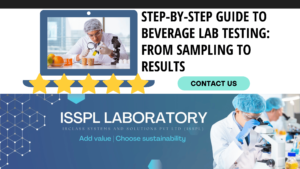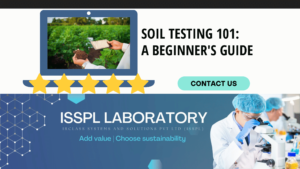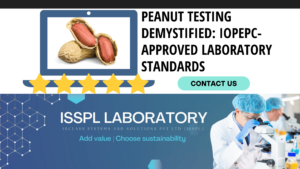An Overview by Team ISSPL - Analytical Testing Laboratory in India
ToggleThe variety of cereals grown in different countries and parts of India makes it an integral part of the diet. The diverse range of pulses and cereals includes rye, oats, barley, maize, triticale, millet, and sorghum.
Among the various options of pulses, rice, and wheat are the most important crops in the cereal segment. In fact, wheat and rice comprise almost half of the cereal crop production across the world. Soya beans are also part of the crop group. It is a cereal product and a pulse. Cereals are staple dietary components in most countries and are essential sources of nutrients.
Cereals contain carbohydrate, protein, and fiber, micronutrients, etc. One can find ample amounts of vitamin E, B, magnesium, and zinc components in the various cereals. These are excellent raw materials for developing processed food products.
Know the source
Most cereals get milled. What is milling? It is a process that involves multiple steps, including – grinding, sifting, separation, and regrinding. The nutrient components and content in a cereal can vary at large. The nutrient content depends on the outer layer of bran that gets removed during milling. Bran is the concentrated component of the cereal filled with fiber, vitamins, and minerals.
Cereal products obtained from the milling process include wheat, rye, oat flour, semolina, cornmeal, corn grits, etc. The flour obtained from cereals is the prime component for making bread. Other products in the category are – breakfast cereals, pasta, snack foods, dry mixes, cakes, pastries, and tortillas. Cereal products are critical ingredients in various products like – batters and coatings, thickeners, sweeteners, confectionary products, processed meats, infant foods, and beverages such as beer.
Cereal contamination – The need to review the component
Cereal contamination is a threat to health and the food industry. The toxic elements in cereals could be environment-based or microbiological in nature. Cereals can get contaminated from various sources like – air, dust, soil, water, animals, humans, insects, rodents, birds, storage, and shipping containers. The handling and processing equipment can contaminate the particles for the lack of quality management.
There can be nutritional changes in the cereals. These happen due to improper storage for long periods. The mismanagement of these cereals impacts the nutrients. The amount of moisture in the storage units can reduce the quality of the cereals. If the humidity is high, the cereals deteriorate. Moisture control is an integral aspect of cereals and one needs the best solution for harvesting the cereal crops.
In fact, spoilage can also happen because of mold and grain germination. Cereals can get contaminated due to rainfall, humidity, soil conditions, wind, temperature, sunlight, frost, insect, bird and rodent activity, and much more. The harvesting equipment and impact of pesticides in the storage and handling phases also have a significant consequence.
Testing and standardization – A vital requirement
Food grains are dominant crops in various parts of the country and the world. Cereals and pulses are part of the vital commodity groups of crops because they provide high-quality protein and critical nutrients to the human body.
Cereal crops can be produced with minimum expenditure and resources. The hassle-free cultivation makes it a prime choice. The crops are excellent supply choices for cattle fodder, raw materials for various industries, and much more. The demand for functional foods has increased, and it has become essential to regulate the quality standards.
The globally-defined standards help produce cereal with optimal quality and potential health benefits. The norms for Cereal and Cereal products are defined in the Food Safety and Standards (Food Products Standards and Food Additives) Regulations, 2011. As per FSSAI, the cereals and cereal products that fall in the standardization category are –
- Atta, semolina besan Pearl Barley
- Food grains like wheat, maize, jawar bajra, and rice
- Pulses like Masur whole, urad whole, moong whole, chana whole
- Split pulses (dals) like moong, urad, Masur and Chana dal
- Products like corn flour, cornflakes, custard powder
- Macaroni and pasta products like macaroni, spaghetti, vermicelli
- Malt and malt-based foods
- Rolled oats
- Solvent-extracted flour including – soy flour, groundnut flour, sesame flour, coconut flour, cottonseed flour, etc.
- Starchy foods like arrowroot and sago
- Bakery products and bread
Specific testing techniques – Know them all.
Cereals, pulses, and similar crop-based products are consumed in large quantities across the world. Over time, the popularity has increased production, processing, and trading practices of cereal in the country and worldwide. The amplified trading prospects have boosted the demand for quality assurance and standardization.
The enhanced use of pesticides to amplify the crop yield requires attention. The improper use of toxic pesticides could make the grains unsuitable for human consumption. Following are the various analytical testing mechanisms essential to safeguard the cereal quality.
- Detection of allergens in the cereal, including – gluten, mustard, peanut, and soya allergens in the cereal flours.
- Identification of anti-nutritional factors like – tannins, saponins, phytates, oxalates, etc.
- Compositional analysis and accurate reporting for protein, fat, carbohydrates, energy, dietary fiber, starch, amino acids, fatty acids, and vitamin contents.
- Filth test for foreign matter detection
- General microbiological analysis for aerobic plate count, yeast, and molds
- Detection of pathogenic micro-organisms (Salmonella, coli, Enterobacteriaceae, Staphylococci)
- Lab analysis of genetically modified organisms like – GMO screening, GMO identification, GMO quantification
- Testing for the anti-oxidants like BHA, TBHQ, etc.
- Testing for Ergot in cereal grains
- Determination of uric acid in the cereal and pulse
- Inspection of Hydrocyanic acid in beans
- Determination of artificial food colors in processed cereal and pulse products like biscuits, cakes, etc.
- Detection of various adulterants and toxic preservatives
- Determination of organic and inorganic residues and contaminants
- Presence of naturally occurring toxic substances like – Aflatoxin, Ochratoxin A and Deoxynivalenol
Ensure the best solution.
Trust the lab-based testing facilities and analytical services offered by IRCLASS Systems and Solutions Pvt Ltd (ISSPL) laboratory. The leading laboratory brings state-of-the-art infrastructure to deliver accurate and efficient reports on cereal and pulse testing for quality determination.







